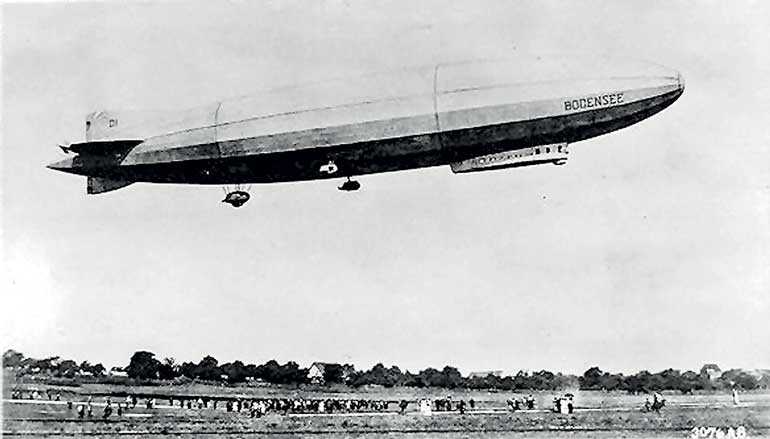Wednesday Dec 31, 2025
Wednesday Dec 31, 2025
Monday, 29 October 2018 00:00 - - {{hitsCtrl.values.hits}}

Kitty Hawk North Carolina – the first ever flight

A Zeppelin airship prior to WW1
17 December 1903. This is a date that dictated the future of mankind. On a cold winter’s day, on a desolate beach in a little known corner of America, two bicycle mechanics, Wilbur and Orville Wright, made the first sustained and controlled flight in a powered heavier-than-air machine.
To call the fragile and odd-looking device an ‘aircraft’ would be generous. But for the first time, humans were able to become airborne in something other than a balloon or glider. Appropriately, this occurred on the 121st anniversary of the first human flight ever – that of the Montgolfier brothers in their hot-air balloon.
The world’s reaction was oddly muted. An obscure paper named (ironically) the ‘Virginian Pilot’ carried a rather inaccurate account as the headline. But the nationally read New York Times and Washington Post largely ignored the story. The United States government rejected an offer from the brothers for the device and it was left to the French and British governments, through their militaries, to pursue the matter.
To some extent, this reaction was understandable. Made of wood and canvas, terribly fragile and very underpowered, these first creations of the Wright’s were barely able to take one person into the air, for just a few feet at a time. But the machine did brilliantly, as Wilbur demonstrated to an ecstatic crowd near Paris, France almost four years later in August 1908.
As a contemporary report recalls, “Wilbur Wright took off to cheers, then turned, and came flying back toward the crowd. He manoeuvred gracefully, made several complete circles and ended by landing gently within yards of where he had started. He’d been in the air for a little less than two minutes. The crowd went wild. Louis Blériot, who was a flyer himself and present, was overwhelmed. So was France itself. There was immediate acclaim. Doubt about the Wrights’ achievement vanished; people were aware that another era had begun.”
Europe became the epicentre of innovation in the field and as the clouds of war gathered, over a hundred companies were frantically designing, building and improving these new devices. The military were the main promoters as the Commanders quickly saw the many applications of having a soldier in the air.
Most of the early companies focussed on fixed-wing flying machines. One notable exception was a German Count named Ferdinand von Zeppelin, who had patented a hydrogen-filled airship as early as 1895. In fact the world’s first company offering revenue service by air, was DELAG (Deutsche Luftschiffahrts-Aktiengesellschaft ‘German Airship Travel Corporation’) which successfully operated passenger airships made by Zeppelin. Founded in 1910 it had a thriving business, carrying over 34,000 passengers on 1,588 commercial flights at the advent of the war. The fleet was merged into the German Navy once the war began.
As war between the great powers seemed inevitable, the frantic pace of innovation increased. The French Aéronautique Militaire, accepted by many as being the first air force in the world, was formed. This was soon followed by the Royal Flying Corps of the British Army and the Imperial German Flying Corps. These fledgling units were to play a decisive role in the tragic war that would soon engulf the entire world.
Let’s discuss more about the Great War and the birth of the airline business in the next edition.
(The writer is a pilot and aviation enthusiast who has flown many jet transport aircraft including the Airbus A380. He was most recently the CEO of SriLankan Airlines and is now pursuing his love of flying and aviation history as a private individual.)